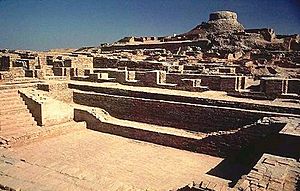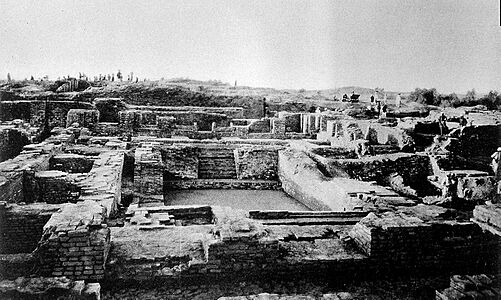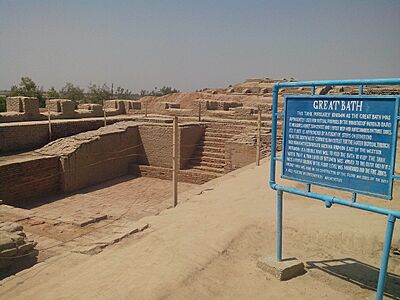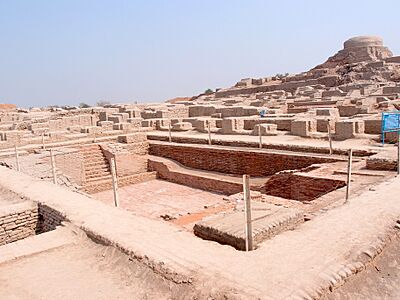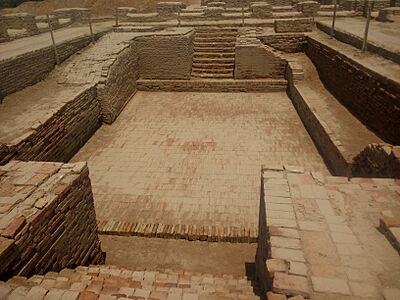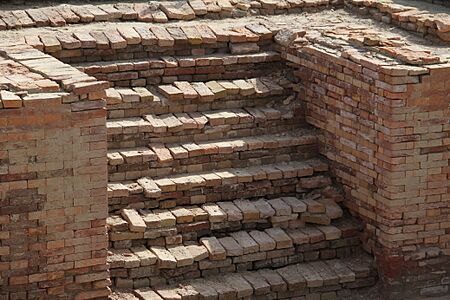Great Bath facts for kids
The Great Bath is a very famous ancient pool. It was found in the ruins of Mohenjo-daro, a city from the Harappan Civilization. This ancient city is located in what is now the Sindh province of Pakistan. Experts believe the Great Bath was built around 4,500 years ago. It was constructed shortly after the main "citadel" area of the city was built.
What Made the Great Bath Special?
The Great Bath of Mohenjo-Daro is often called the "earliest public water tank of the ancient world." It's about 12 meters (40 feet) long and 7 meters (23 feet) wide. At its deepest point, it reaches about 2.4 meters (8 feet) down.
To get into the pool, there were two wide staircases, one on the north side and one on the south. At the bottom of these stairs, there was a ledge about 1.4 meters (4.6 feet) high. The floor of the pool gently sloped down to a small opening in the southwest corner. This opening led to a special drain made of corbelled arches. This drain carried the used water away from the bath.
The builders made sure the pool held water very well. They used finely cut bricks laid on their edges with a special plaster called gypsum. The walls were built the same way. To make it even more waterproof, a thick layer of bitumen (a natural tar-like substance) was put along the sides and probably on the floor too.
Along the eastern, northern, and southern edges of the bath, there were rows of brick columns. These columns had stepped edges, which might have held wooden screens or window frames. Two large doors led into the bath complex from the south. There were also entrances from the north and east.
A series of rooms were found along the eastern side of the building. In one of these rooms, there was a well. This well might have supplied some of the water to fill the large pool. It's also possible that rainwater was collected for this purpose, but no special drains for rainwater have been found.
Many experts believe this large pool was used for important religious events. Water was likely used to clean and refresh people during these ceremonies. This shows how important special bathing in sacred pools and rivers has been for a very long time.
The College of Priests
Right across the street from the Great Bath, archaeologists found another large building. This building had several rooms, three open porches (called verandas), and two staircases. These stairs led to the roof and an upper floor. Because of its size and location near the Great Bath, this building is thought to be a "College of Priests." This means it might have been a place where religious leaders lived or gathered.
Gallery


